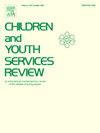The relationship between violence against authority in the family and adolescent involvement in school bullying: The moderating role of parental psychological control
IF 2.4
2区 社会学
Q1 FAMILY STUDIES
引用次数: 0
Abstract
Purpose
This study aims to investigate the relationship between violence against authority in the family (including child-to-parent physical violence and parent-to-elder conflict) and adolescent involvement in school bullying, as either a victim or a perpetrator, while exploring the moderating role of parental psychological control.
Methods
The study sample consisted of 2132 students in grades 4–9 from a city in Shandong Province, China (M = 12.43, SD = 1.33). Instruments used included the Family Violence Behavior Questionnaire, revised Olweus Bully/Victim Questionnaire, and Parental Psychological Control Scale.
Results
Violence against authority in the family has become a form of domestic violence that cannot be ignored, with 4.9 % of adolescents engaging in child-to-parent physical violence and 24.9% witnessing parent-to-elder conflict. Controlling for parent-to-child physical violence and parent-to-parent physical violence, child-to-parent physical violence, parent-to-elder conflict, and parental psychological control positively predicted adolescent perpetration of school bullying, while parent-to-elder conflict and parental psychological control positively predicted adolescent victimization from school bullying. Parental psychological control played a moderating role between family violence and bullying involvement. In cases of higher parental psychological control, the predictive effects of child-to-parent physical violence on adolescent perpetration and victimization of school bullying were strengthened. Similarly, the predictive effect of parent-to-child physical violence on adolescent victimization from bullying was also enhanced.
Conclusions
Families characterized by violence against authority and a ’violence + control’ pattern were associated with a higher risk of adolescent involvement in school bullying.
家庭反权威暴力与青少年校园欺凌的关系:父母心理控制的调节作用
目的本研究旨在探讨家庭中针对权威的暴力(包括孩子与父母之间的身体暴力和父母与长辈之间的冲突)与青少年作为受害者或施暴者参与校园欺凌的关系,同时探讨父母心理控制的调节作用。方法研究样本为山东省某市4 ~ 9年级学生2132名(M = 12.43, SD = 1.33)。使用的工具包括家庭暴力行为问卷、修订的Olweus欺凌/受害者问卷和家长心理控制量表。结果家庭中针对权威的暴力已成为一种不可忽视的家庭暴力形式,4.9%的青少年参与了子女对父母的身体暴力,24.9%的青少年目睹了父母与长辈的冲突。控制亲子身体暴力、亲子身体暴力、亲子身体暴力、父母与长辈冲突和父母心理控制正向预测青少年校园欺凌行为,而父母与长辈冲突和父母心理控制正向预测青少年校园欺凌行为。父母心理控制在家庭暴力和欺凌参与之间起调节作用。在父母心理控制水平较高的情况下,亲子间身体暴力对青少年校园欺凌行为和受害的预测作用增强。同样,父母对子女的身体暴力对青少年欺凌受害的预测作用也有所增强。结论:以暴力对抗权威和“暴力+控制”模式为特征的家庭与青少年参与校园欺凌的风险较高有关。
本文章由计算机程序翻译,如有差异,请以英文原文为准。
求助全文
约1分钟内获得全文
求助全文
来源期刊

Children and Youth Services Review
Multiple-
CiteScore
6.30
自引率
6.10%
发文量
303
期刊介绍:
Children and Youth Services Review is an interdisciplinary forum for critical scholarship regarding service programs for children and youth. The journal will publish full-length articles, current research and policy notes, and book reviews.
 求助内容:
求助内容: 应助结果提醒方式:
应助结果提醒方式:


